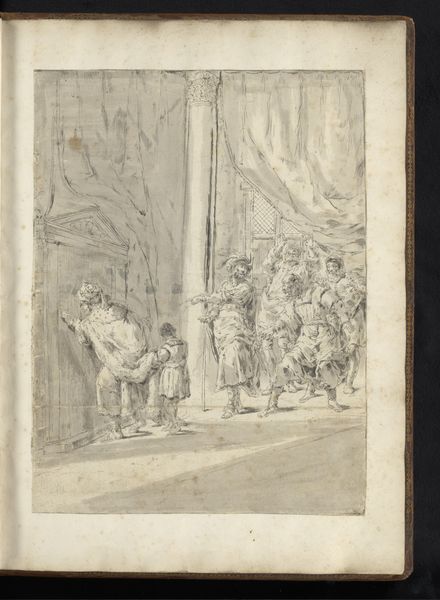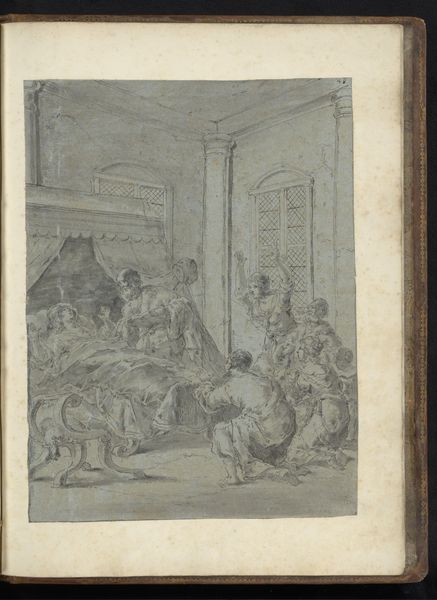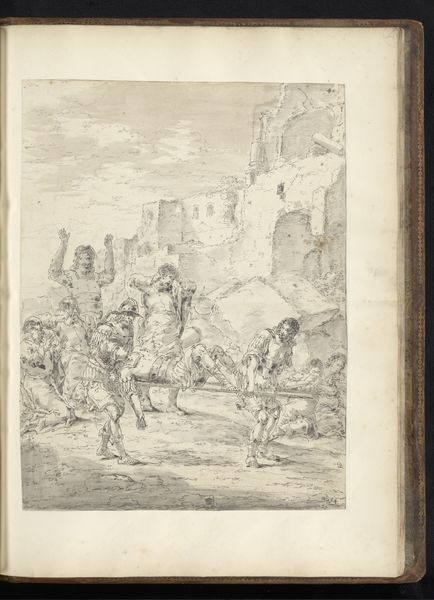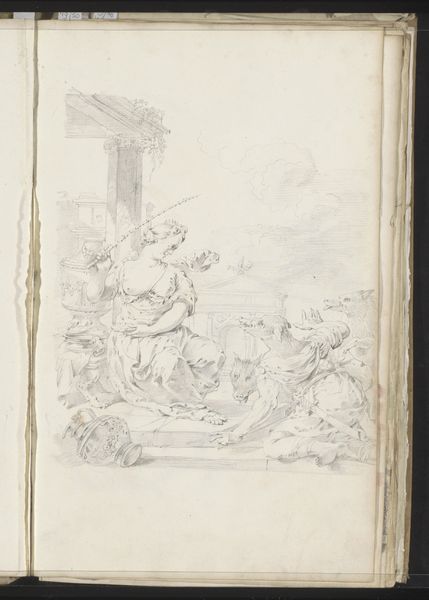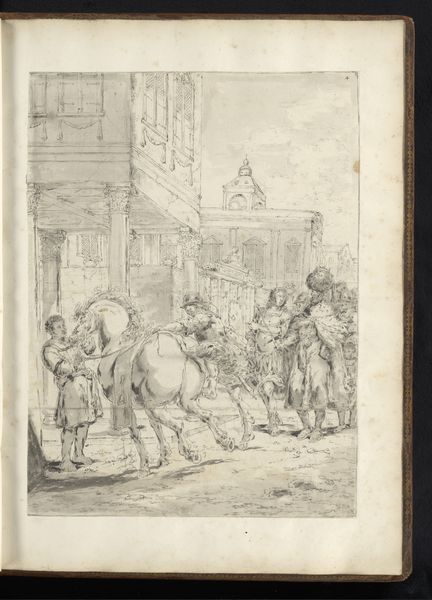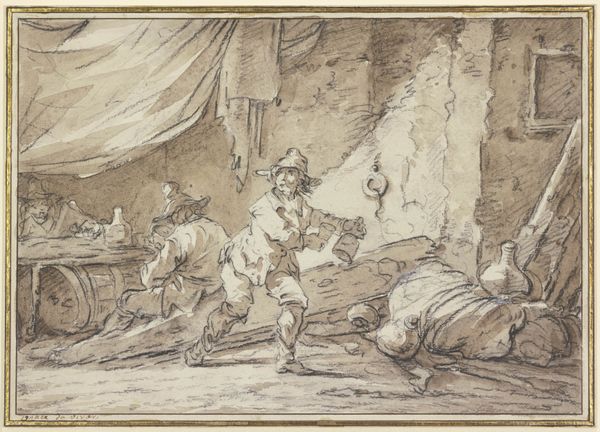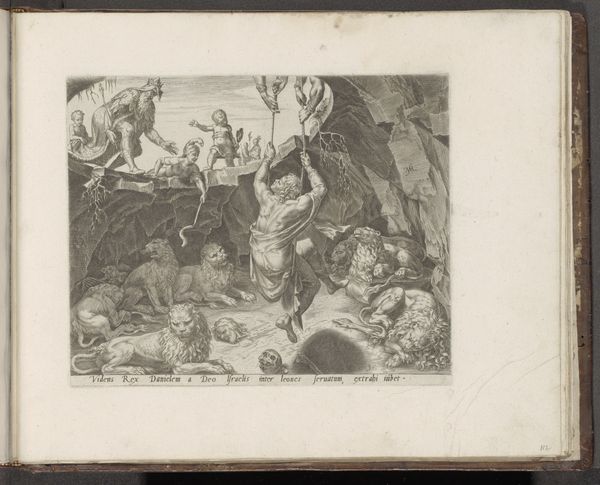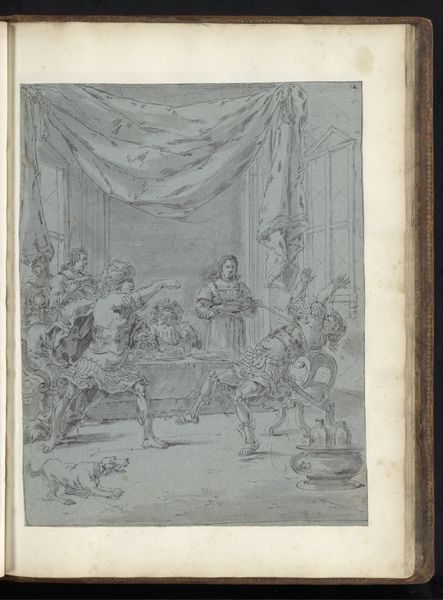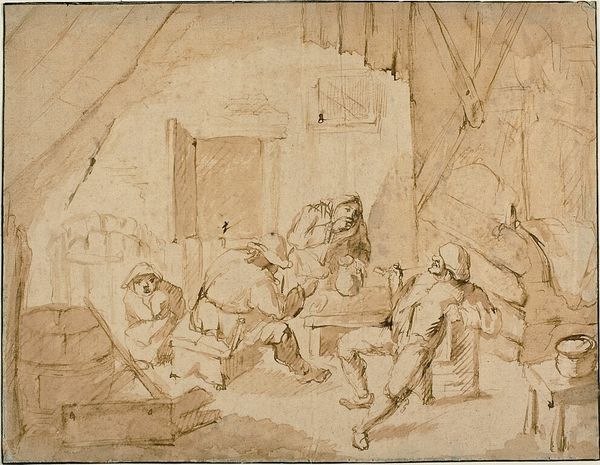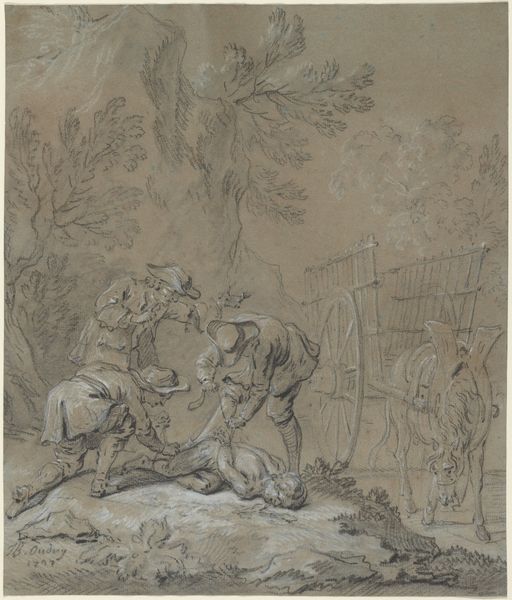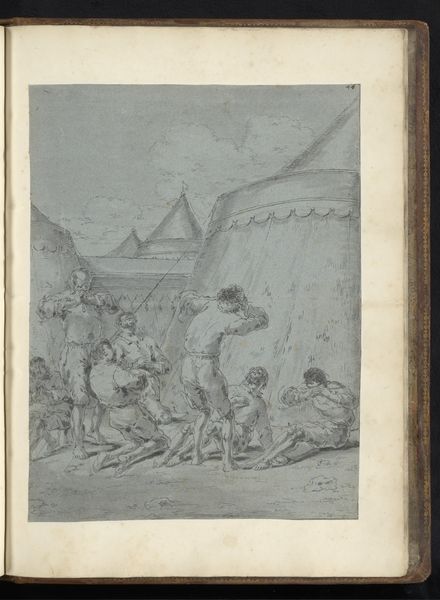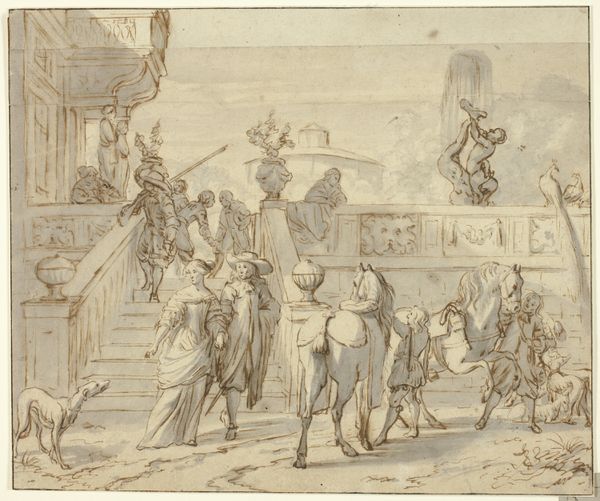
drawing, paper, ink
#
drawing
#
narrative-art
#
baroque
#
figuration
#
paper
#
ink
#
genre-painting
#
history-painting
Dimensions: height 412 mm, width 312 mm
Copyright: Rijks Museum: Open Domain
Curator: Here we have "The Birth of Alexander the Great" by Leonaert Bramer, created sometime between 1655 and 1665. Editor: It’s captivating—almost ghostly. The washes of ink give a fluid, ethereal quality to the scene. I'm struck by the sketch-like execution, focusing more on suggestion than sharp detail. Curator: Indeed. The loose lines are quite characteristic of Bramer's drawings. The ink on paper allows for that incredible detail while maintaining an airy composition. You have the central drama of the birth itself happening under that elaborate canopy. Editor: And that canopy! You immediately understand that this is no ordinary birth. Even rendered as simply as it is, you grasp at the weight of those expensive fabrics and that elaborate structure. All made possible by particular types of available ink. Curator: Absolutely. Bramer was fascinated by historical and mythological narratives. Look at the figures attending to the newborn Alexander, you can feel a connection to symbolic power. These depictions always rely on prior representation of wealth to convey a similar power relation. Editor: But who were the craftspeople behind the scenes, responsible for processing those inks, pulping the paper, and developing the techniques? The final piece elides its own production! Curator: That's a crucial point. Often the labor that underpins displays of wealth or moments of great significance goes unnoticed. In many of his historical renderings, Bramer tries to show this through sheer complexity. Here he captures a pivotal moment through specific iconographic visual cues. Editor: Exactly! By calling out the visual symbols he connects not only past and present, but power and the way it is manufactured and understood over time. The very making of it reinforces existing social strata. Curator: I find myself reflecting on the nature of storytelling. How the birth of a legendary figure becomes etched into cultural memory and, just how artists shape, and often re-shape, our understanding of it. Editor: It's amazing how much a seemingly simple ink drawing on paper can reveal about both the powerful and the makers throughout history.
Comments
No comments
Be the first to comment and join the conversation on the ultimate creative platform.
